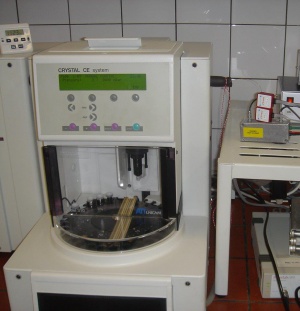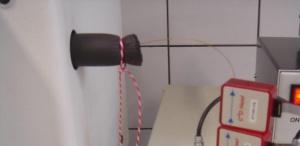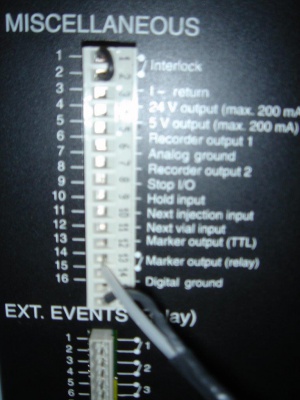Connecting the C4D to the PrinCE
This application note describes how to connect the eDAQ C4D system to the Prince Technologies PrinCE-C 600 series and the Groton Biosystems GPA100 (previously sold as Crystal CE and Unicam CE instruments).
Introduction
The instrument can be used with a range of modular detectors, including UV/VIS, Fluorescence, LIF, MS, Photo Diode Array and the eDAQ C4D system.
Trigger Cable
The instrument can be configured to trigger the start of analysis of the contactless conductivity detector, with either PowerChrom software or Chart software. This is achieved by connecting the “Marker output” at the back of the CE instrument to the trigger input of the C4D hardware, using the relevant cable.
Installing the Headstage on the Capillary
Simply thread the capillary through the channel in the side of the C4D headstage and fix in place.
Ensure that you position the C4D headstage near the end of the capillary that is grounded, away from the end of the capillary where the high voltage is applied. This is to ensure that the high voltage doesn’t arc from the background electrolyte inside the capillary, through the thin wall of the capillary, to the headstage and on to the C4D hardware, which could damage the equipment.
Citations
- The PrinCE 500 instrument was used with the eDAQ C4D for the determination of creatine and phosphocreatine in muscle biopsy samples. The limits of detection for creatine and phosphocreatine were found to be 2.5 and 1.0 µM, respectively. It was noted that contactless conductivity detection allows the determination of molecules which are not accessible by UV-detection, and is therefore more versatile. It is also simpler, and thus less expensive, and has other advantages such as higher robustness as it is not necessary to create an optical window in the protective coating of the separation capillaries. DOI: 10.1016/j.aca.2012.03.055
- Lipophilic Anions were extracted using Electric Field-Driven Extraction across a Carrier-Mediated Polymer Inclusion Membrane, separated using the PrinCE 500 instrument and detected using the eDAQ C4D. Limits of detection of 0.8 and 1.5ng/mL were obtained for glyphosate and aminomethylphosphonic acid respectively. DOI: 10.1021/ac201772g


